RIBA Stage 1 – Preparation and brief (we get everything ready)
Whatever bits of inspiration have led you to this moment, now’s the time to show us. And if our interest in you gets a bit personal (your life, your hopes, your dreams), it’s because your home is personal. We want to make it right for you. There’ll be homework too – a questionnaire that gets to the heart of things you might not have thought to tell us.
We gather all the information we can about the site, so that we know exactly what we’re dealing with: its constraints, its context, and its potential. We help you arrange a detailed survey, so that everything – walls, floors, drains – gets measured, sized up, and committed to our ‘blueprint document’. It’s much better (and less costly) to get our heads around it all now than later.
You get to meet your Project Architect. That’s the lucky member of our team who’ll be by your side throughout, anticipating problems, fixing issues, and keeping everything – and everyone – running smoothly and in the right direction.
We put together a schedule of design meetings, each already with own agenda, so that there’s a clear way forward and so that we (and you) come to the table prepared at every stage. With those dates in the diary and our blueprint document assembled, you can begin to see how your project might unfold.
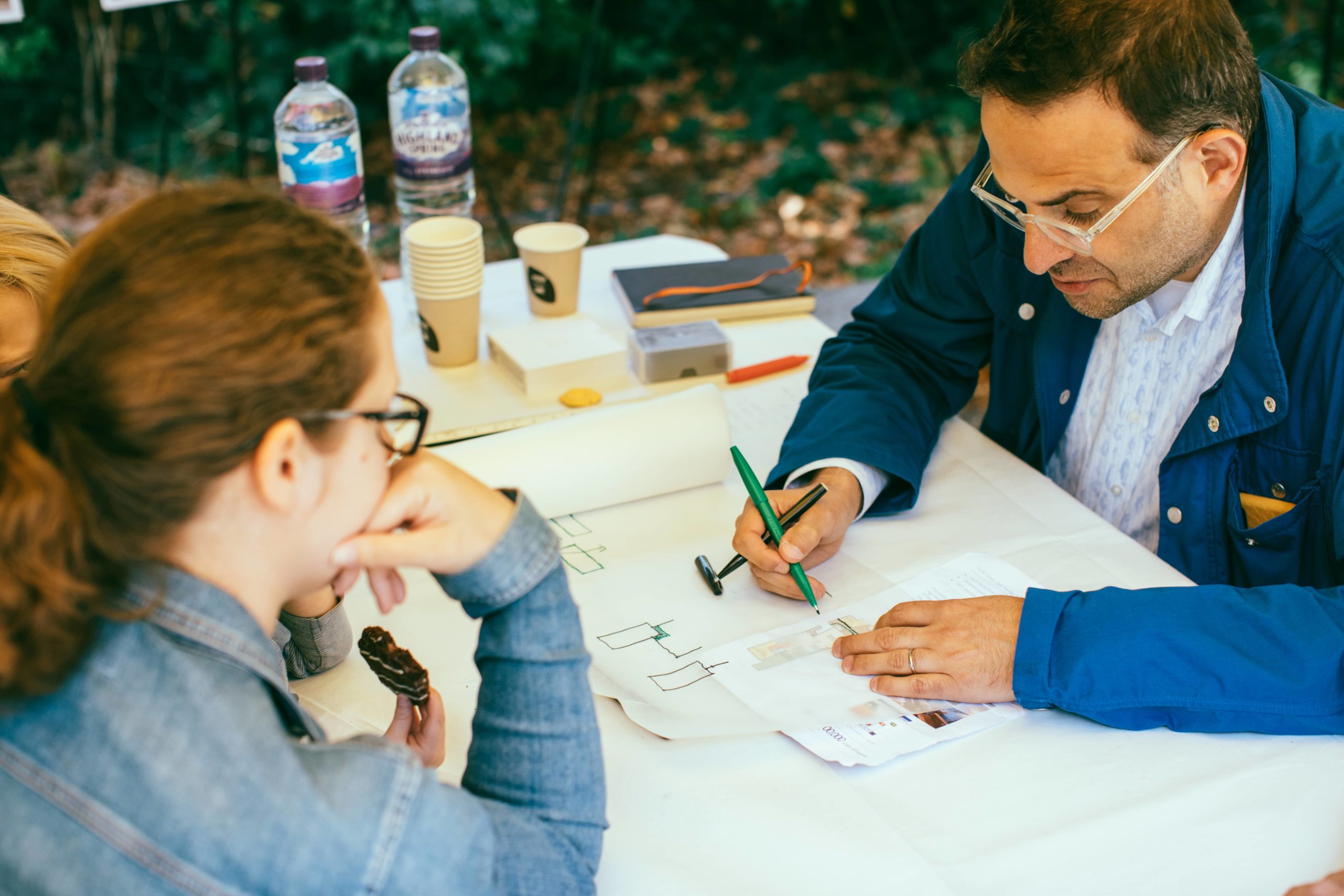
RIBA Stage 2 – Concept Design (we get creative and crunch the numbers)
With the stage all set, we’re itching to get creative. We begin by thinking through a few different layouts that tick the boxes for the key elements of your brief. With a bit of 2-D and 3-D magic – ie drawings and models – you’ll see exactly how the different scenarios would work.
If two things in the brief conflict, or if anything else is great in theory but troublesome in practice, it jumps out at us straight away. So we sit down together and come up with another option. It’s not about compromise, but about getting it absolutely right, whichever way you look at it.
We might run it past your local Planning department to check there’s nothing they might object to in our design. At this point they can’t give us guarantees, but it’s reassuring to get this unofficial nod before moving forward.
With a plan properly in place, we crunch the numbers. We do that either by bringing a Quantity Surveyor (QS) on board or by using our ‘BuildPartner’ software. Either way we get a truly accurate picture of what the project will cost, and we won’t get ourselves into that awkward and time-wasting situation of having to scale down our ambitions – and yours – when we get the quotes back from contractors.
Getting a reliable set of figures also means we won’t be forced to make changes further down the line, which would entail going back to the local Planning department. Instead, we press ahead, secure and happy in the knowledge that what we’ve drawn will be a true reflection of our finished building.

RIBA Stage 3 – Developed Design and Planning (we submit our design to the Planning department)
With a design we all love, numbers that add up, and the planning officer’s unofficial nod, we’re ready to put together our planning application. Once we’ve explained every element and ticked every box, we press submit.
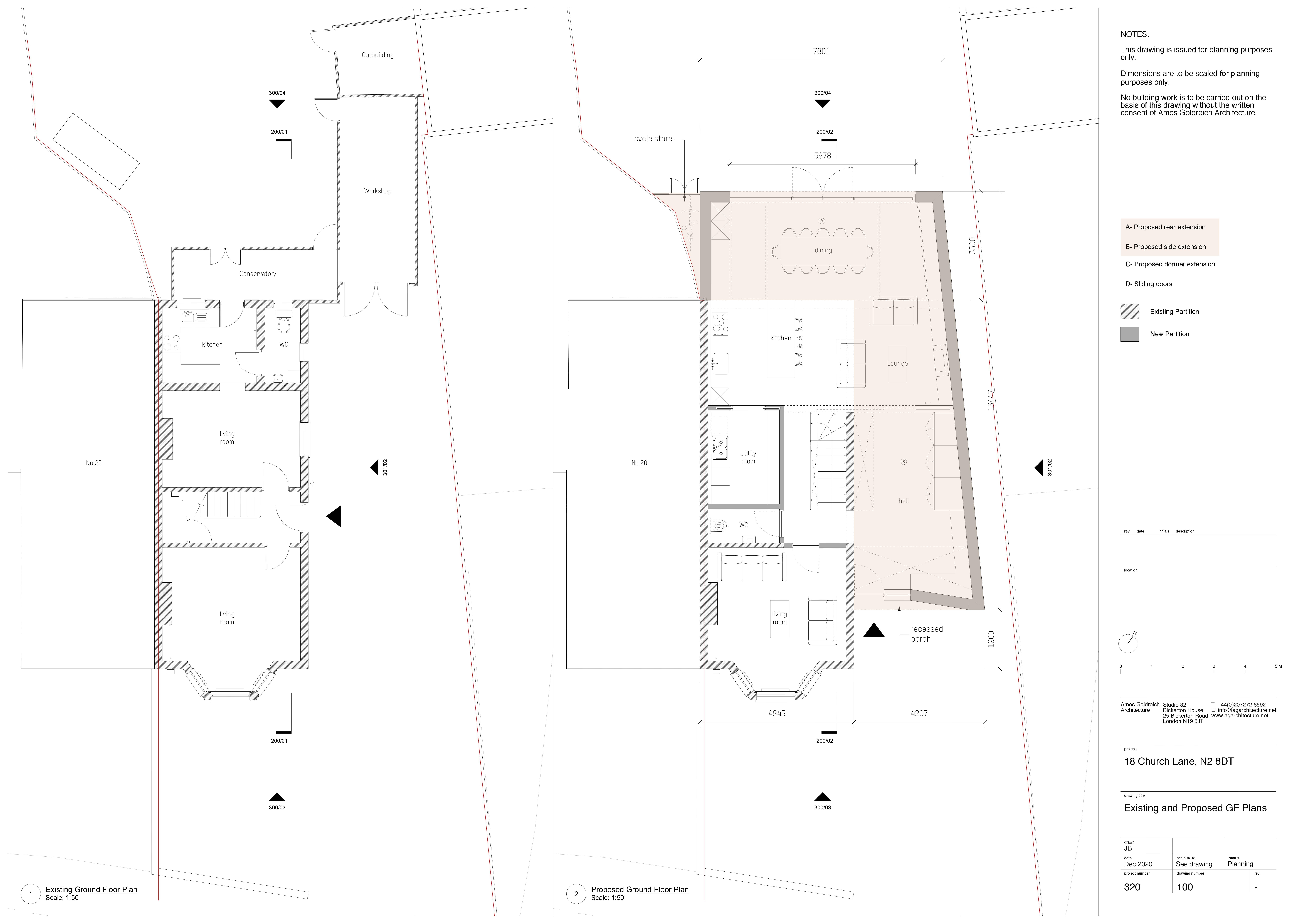
RIBA Stage 4 – Technical Design (we think of everything)
Now there are two options. The Planning process takes 8–10 weeks, so we can either bide our time and wait for the green light or, if time is of the essence, we can start the tendering process now, so that – as soon as approval comes through – we’ve got a builder on board and we’re ready to go.
To quote for the project, contractors need more information than we can put together on our own, so we have a network of brilliant consultants to call on. They could include structural engineers, services engineers, audio-visual consultants, approved building inspectors, party-wall surveyors, and energy consultants, to name just a few.
That hefty, collaborative bundle of information will enable builders to quote – and, if they then get the job, to make your design a reality. It includes detailed drawings, specifications, and a schedule of works (listing everything that needs to happen and when), and it embraces everything from structural works to those things that make your house a home: fixtures, fitting, baths, showers, basins, wall and floor finishes (and we’ll have had many conversations about all these details before getting to this stage).
Meanwhile, we also liaise with Building Control. They scrutinise the design from the point of view of fire safety, energy conservation, structure, and other technical aspects. That’s perhaps the less exciting side of any building project, but no less important for that, and we want to have ‘full plans approval’ under our belts before everything kicks off on site.

Stage 4.1 – Interior Design (together we source the finer things)
It might seem odd to be choosing and buying lights bulbs and curtains so soon, before you even have a ceiling or wall to hang them from, but our vision is for a house where everything comes together perfectly. We’d never want these to be a mere afterthought. We help you source it all – cabinetry, hardware, bathroom fittings, lighting, electrical fixtures, sofas, and whatever else contributes to the vision for your finished house.
Over the years we’ve developed great relationships with a whole host of suppliers, and we have trade discounts with many of them. We pass all of these on to you.

Stage 4.2 – Tender (we help you choose the right builder)
With the quotes back from contractors, we go through and evaluate them all before recommending the one we think you should go with. We’re thinking about price – but not just price. What will they be like to work with? Are they committed to getting every detail right? Are they as concerned with quality as we are?
Choosing the right team is one of the most important things you can do (almost as important as choosing the right architect).
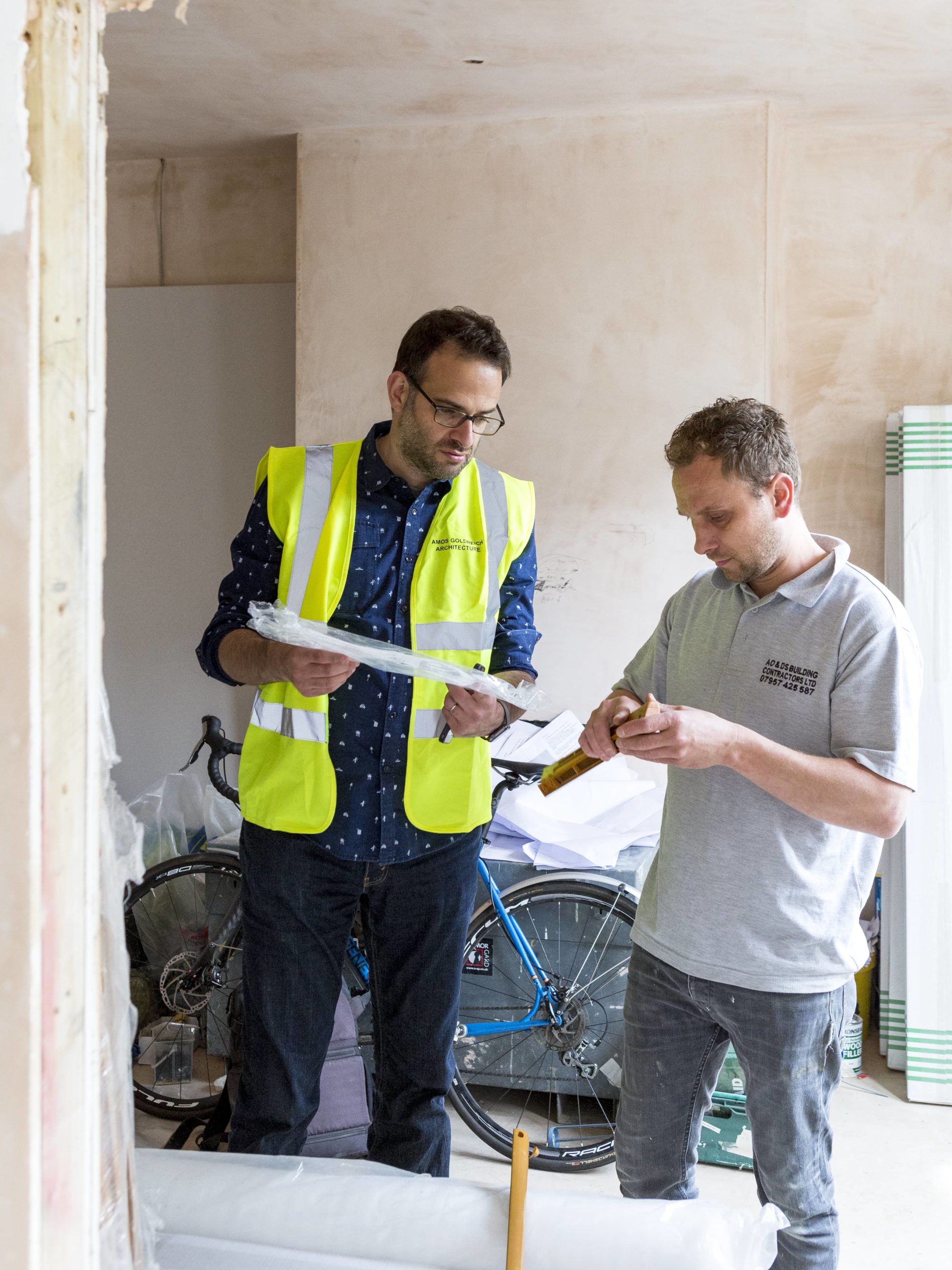
Stage 5 – Construction (the heavy work gets underway)
Now the real, messy work can begin. That means dust, noise, and upheaval. But by this point you’re ready for that, and we’re right by your side.
We act as your contract administrator, liaising between you and the contractor, and monitoring quality, compliance, cost, and progress. If there’s a query, issue, or doubt, we’re here to resolve it. We hold regular site meetings and keep a record of everything that’s agreed. We liaise with Building Control too.
In short, we take away the stress and we keep the wheels of your project turning in exactly the way we’ve planned.
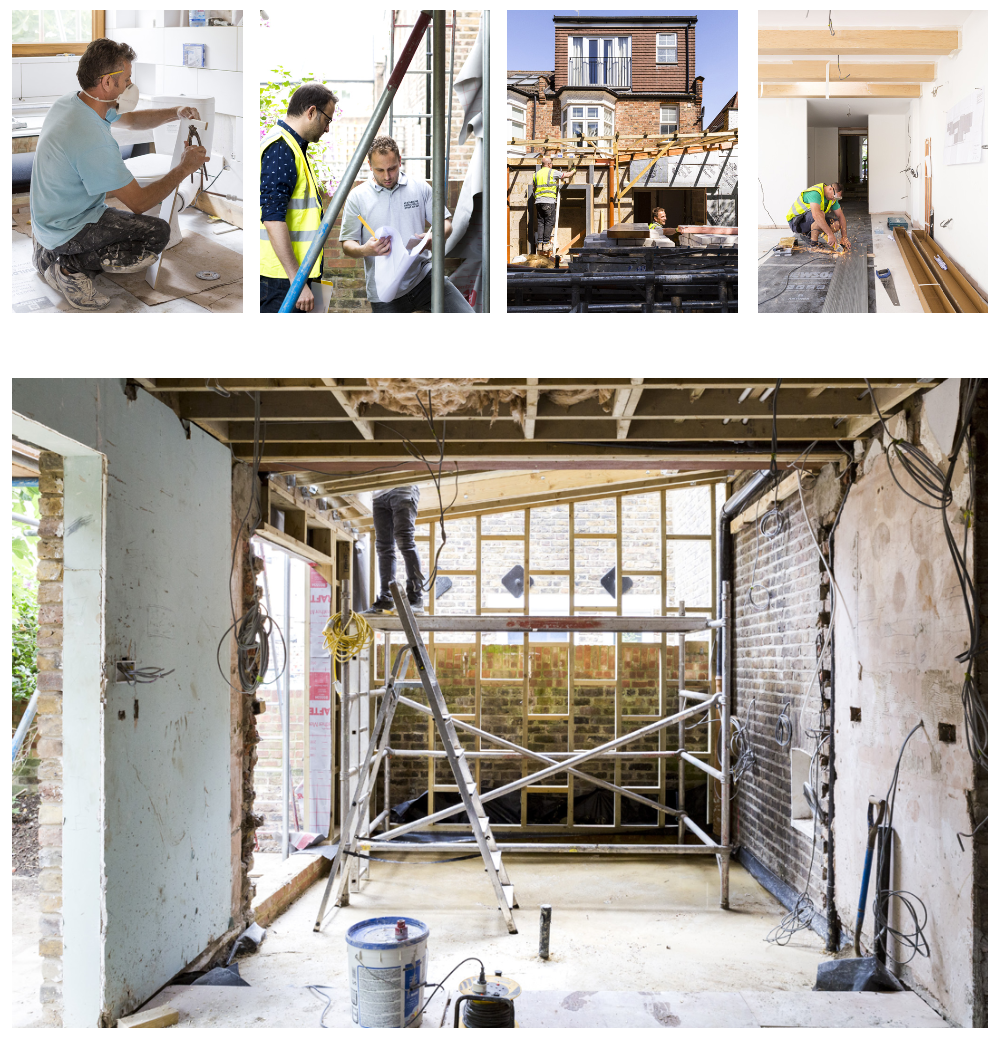
Stage 6 – Handover (it’s over to you)
When every last brick, nail and lightbulb is in place, the house is yours at last.
It’s an exciting moment, but a little daunting too. To make sure you know how to work every switch and every button, we leave you with your ‘owner’s manual’. It contains everything you need to make sure your home is keeping you perfectly comfortable and working just as efficiently as it should.
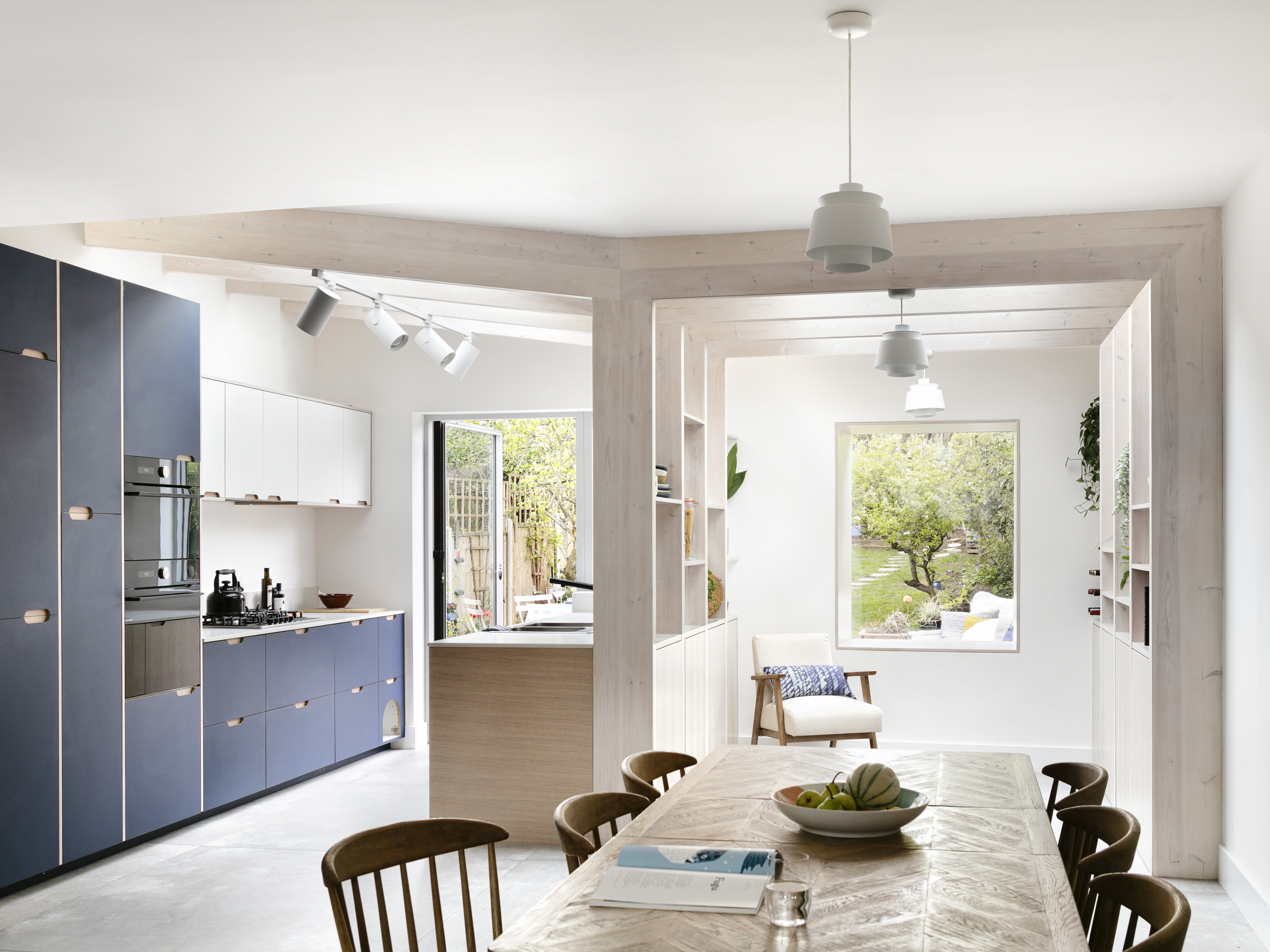
Rectification Period (we’re still here for you)
We hope life in your new home is nothing but a joy, and we don’t want you to worry about any little thing that might go wrong as you settle in. For the next few months we’re still here to put any teething problems swiftly right.
Only then, once this process of snagging is complete, do we give you a ‘final certificate’. And that’s when you pay the last little sum to the contractor (usually 2.5%).
With that all-important piece of paper and that final transaction, the project is brought to a satisfying close. But for you and your new home, it’s just the beginning.
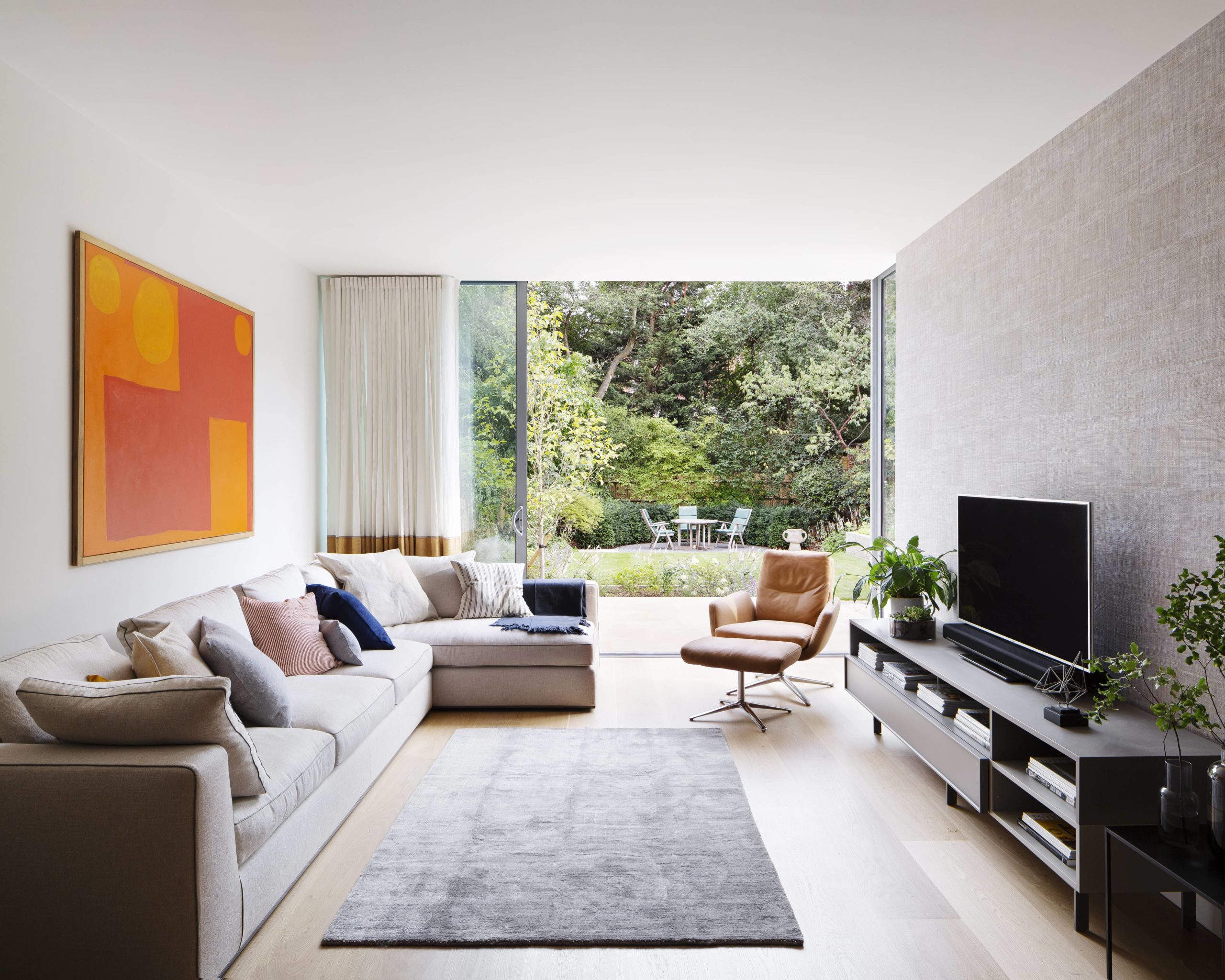
Have a look at the welcome pack we give to new clients.
Why should we choose you?
We provide a high quality service that delivers value for money; we can help you make the most efficient use of your space, we pay careful attention to detail, help you to select the best materials and finishes for your project, and we can create energy efficient buildings which keep your running costs low.
We do much more than simply produce a set of plans. Using our experience, skill and knowledge we can lift your project out of the ordinary and help to create a design that meets all your needs and aspirations. Our professional service gives you freedom from worry. We offer a comprehensive range of architectural services from initial design through to completion of a project on site. Undertaking a building project can be a daunting experience, but we offer over 15 years of professional experience to guide you through this complex process.
We pride ourselves in our client centred approach, our imaginative design flair, our attention to detail and our ability to deliver cost effective solutions to every project.
Can you advise me prior to purchasing my property?
Yes. We can advise on possible ways to improve the property by alteration, conversion or extension. This helps our clients understand the full potential of the property they are considering and informs their decision on whether the home is likely to meet all their requirements. We can also give you some basic guidance on the likely costs of the work required. We charge £100+VAT an hour for this service.
Does your fee include other costs, e.g. other consultant’s fees, statutory fees?
No, we can provide an indication of these costs but they do not form a part of our fee.
What if I change my mind?
Changes are a natural part of the design process. We actively encourage you to consider a range of alternatives during the project development to avoid later “if only we’d have….” moments. It costs nothing to rub out a pencil sketch, but changes after construction always cost time and money.
How much will my project cost?
The cost of a building project is extremely difficult to predict particularly before it is fully designed. There are many factors which affect the price such as geographic location, size, scope and complexity of the work, amount of structural work involved, and level of specification required. We will be in a better position to give you an idea of costs once you have discussed what you would like to achieve, and we have seen what is involved.
Read our guide on “How much an extension in London costs”

